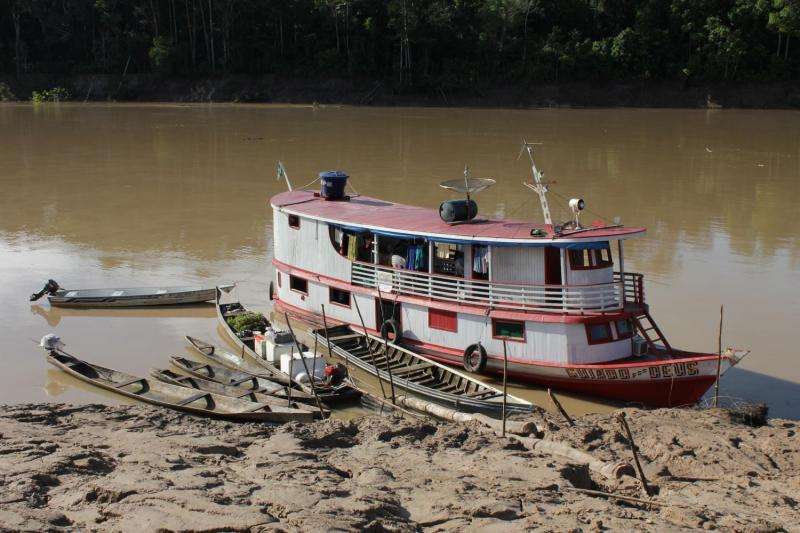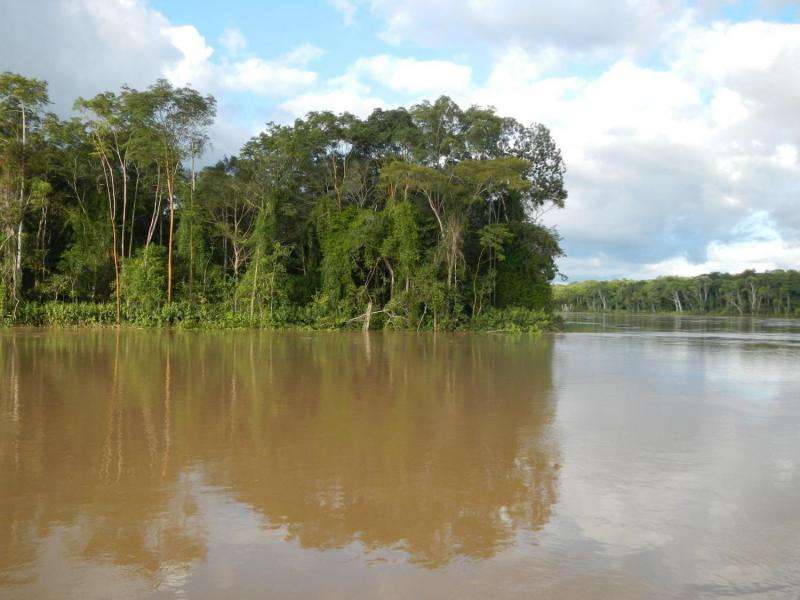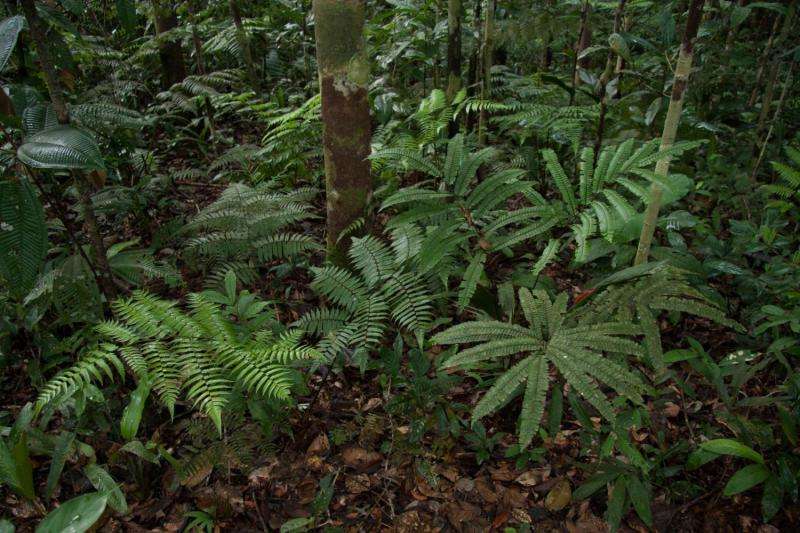Researchers found unexpected biogeographical boundaries in Amazonia

The new information necessitates revising the scenarios on how the enormous species richness in Amazonia has evolved and which factors define species distributions.
The general picture about Amazonia is that the rain forest is rather uniform, but large rivers form dispersal barriers that limit species distribution and trigger speciation, i.e. the evolutionary formation of new species. An international team led by researchers from the University of Turku, Finland, has identified a 1,000-kilometre-long boundary between two geological formations that constrains plant species occurrences more effectively than a large river.
"This boundary intrigued us, because it is so long. It is clearly visible in satellite images even though superficially the rainforests on both sides look similar. We decided to find out if there are floristic differences across the boundary, because the result would have a great impact on how we interpret Amazonian biogeography," explains Docent Hanna Tuomisto, who led the study.
"It is especially interesting that the newly documented boundary runs right across several large rivers. One of these is the Juruá, which has earlier been proposed to be a dispersal barrier," says Tuomisto.

To document the ecological importance of the river and the boundary, Tuomisto organised an expedition to the Juruá River with researchers from Finland, Brazil and Denmark.
"We lived on a river ship for three months. At daytime, the ship was parked at the shore while we were in the forest making plant inventories and collecting soil samples. Each night we returned to the ship, and by the next morning it took us to the next field site," tells Gabriel Moulatlet, a Brazilian botanist and a doctoral candidate at the University of Turku.
Already in the field it became obvious that the geological boundary separated two, floristically very different forest areas from each other. Most of the plant species registered by the team were either completely restricted to only one side of the boundary or were much more abundant on one side than the other.
Laboratory analyses confirmed that also soils on the two sides were different. In addition to affecting present-day species distributions, the boundary may therefore have promoted speciation, as plants on opposite sides have been gradually adapting to different kinds of soils.

Usually rivers have been thought to be the most important dispersal barriers in Amazonian rain forests. Therefore, many species distribution maps have been drawn in a way that their limits follow rivers. These limits are uncertain, however, because Amazonia is poorly known: there is little information on where species actually occur.
"Our findings raise the question: how common are such boundaries in Amazonia? This is what we would like to find out next, as it is otherwise impossible to understand and map Amazonian biodiversity," says Docent Kalle Ruokolainen, another contributor to the study.
The research was funded by the Academy of Finland, Danish National Research Council and the Brazilian National Council for Scientific and Technological Development.
More information: Hanna Tuomisto et al. A compositional turnover zone of biogeographical magnitude within lowland Amazonia, Journal of Biogeography (2016). DOI: 10.1111/jbi.12864
Journal information: Journal of Biogeography
Provided by Academy of Finland




















